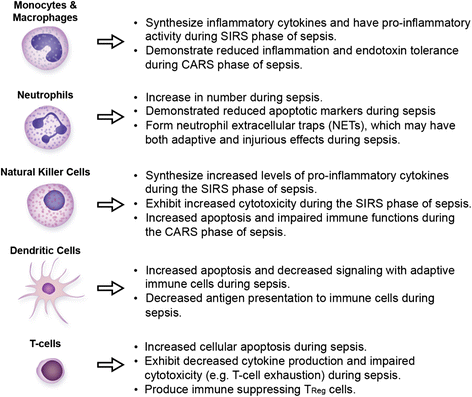Current challenges in understanding immune cell functions during septic syndromes
- PMID: 25887317
- PMCID: PMC4374283
- DOI: 10.1186/s12865-015-0073-4
Current challenges in understanding immune cell functions during septic syndromes
Abstract
Background: Sepsis is a dynamic infectious disease syndrome characterized by dysregulated inflammatory responses.
Results: Despite decades of research, improvements in the treatment of sepsis have been modest. These limited advances are likely due, in part, to multiple factors, including substantial heterogeneity in septic syndromes, significant knowledge gaps in our understanding of how immune cells function in sepsis, and limitations in animal models that accurately recapitulate the human septic milieu. The goal of this brief review is to describe current challenges in understanding immune cell functions during sepsis. We also provide a framework to guide scientists and clinicians in research and patient care as they strive to better understand dysregulated cell responses during sepsis.
Conclusions: Additional, well-designed translational studies in sepsis are critical for enhancing our understanding of the role of immune cells in sepsis.
Figures
References
-
- Angus DC, Carlet J, Brussels Roundtable P. Surviving intensive care: a report from the 2002 Brussels Roundtable. Intensive Care Med. 2003;29(3):368–77. - PubMed
Publication types
MeSH terms
Grants and funding
LinkOut - more resources
Full Text Sources
Other Literature Sources


